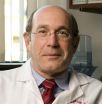(Press-News.org) CAMBRIDGE, MA -- Using a gene-editing system originally developed to delete specific genes, MIT researchers have now shown that they can reliably turn on any gene of their choosing in living cells.
This new application for the CRISPR/Cas9 gene-editing system should allow scientists to more easily determine the function of individual genes, according to Feng Zhang, the W.M. Keck Career Development Professor in Biomedical Engineering in MIT's Departments of Brain and Cognitive Sciences and Biological Engineering, and a member of the Broad Institute and MIT's McGovern Institute for Brain Research.
This approach also enables rapid functional screens of the entire genome, allowing scientists to identify genes involved in particular diseases. In a study published in the Dec. 10 online edition of Nature, Zhang and colleagues identified several genes that help melanoma cells become resistant to a cancer drug.
Silvana Konermann, a graduate student in Zhang's lab, and Mark Brigham, a McGovern Institute postdoc, are the paper's lead authors.
A new function for CRISPR
The CRISPR system relies on cellular machinery that bacteria use to defend themselves from viral infection. Researchers have previously harnessed this cellular system to create gene-editing complexes that include a DNA-cutting enzyme called Cas9 bound to a short RNA guide strand that is programmed to bind to a specific genome sequence, telling Cas9 where to make its cut.
In the past two years, scientists have developed Cas9 as a tool for turning genes off or replacing them with a different version. In the new study, Zhang and colleagues engineered the Cas9 system to turn genes on, rather than knock them out.
Scientists have tried to do this before using proteins that are individually engineered to target DNA at specific sites. However, these proteins are difficult to work with. "If you use the older generation of tools, getting the technology to do what you actually want is a project on its own," Konermann says. "It takes a lot of time and is also quite expensive."
There have also been attempts to use CRISPR to turn on genes by inactivating the part of the Cas9 enzyme that cuts DNA and linking Cas9 to pieces of proteins called activation domains. These domains recruit the cellular machinery necessary to begin reading copying RNA from DNA, a process known as transcription.
However, these efforts have been unable to consistently turn on gene transcription. Zhang and his colleagues, Osamu Nureki and Hiroshi Nishimasu at the University of Tokyo, decided to overhaul the CRISPR-Cas9 system based on an analysis they published earlier this year of the structure formed when Cas9 binds to the guide RNA and its target DNA. "Based on knowing its 3-D shape, we can think about how to rationally improve the system," Zhang says.
In previous efforts, scientists had tried to attach the activation domains to either end of the Cas9 protein, with limited success. From their structural studies, the MIT team realized that two small loops of the RNA guide poke out from the Cas9 complex and could be better points of attachment because they allow the activation domains to have more flexibility in recruiting transcription machinery.
Using their revamped system, the researchers activated about a dozen genes that had proven difficult or impossible to turn on using the previous generation of Cas9 activators. Each gene showed at least a twofold boost in transcription, and for many genes, the researchers found multiple orders of magnitude increase in activation.
Genome-scale activation screening
Once the researchers had shown that the system was effective at activating genes, they created a library of 70,290 guide RNAs targeting all of the more than 20,000 genes in the human genome.
They screened this library to identify genes that confer resistance to a melanoma drug called PLX-4720. This drug worksDrugs of this type work well in patients whose melanoma cells have a mutation in the BRAF gene, but cancer cells that survive the treatment can grow into new tumors, allowing the cancer to recur.
To discover the genes that help cells become resistant, the researchers delivered CRISPR components to a large population of melanoma cells grown in the lab, with each cell receiving a different guide RNA targeting a different gene. After treating the cells with PLX-4720, they identified several genes that helped the cells to survive -- some previously known to be involved in drug resistance, as well as several novel targets.
Studies like this could help researchers discover new cancer drugs that prevent tumors from becoming resistant.
"You could start with a drug that targets the mutated BRAF along with combination therapy that targets genes that allow the cell to survive. If you target both of them at the same time, you could likely prevent the cells from developing resistance mechanisms that enable further growth despite drug treatment," Konermann says.
Scientists have tried to do large-scale screens like this by delivering single genes carried by viruses, but that does not work with all genes.
Zhang's lab also plans to use this technique to screen for genes that, when activated, could correct the effects of autism or neurodegenerative diseases such as Alzheimer's. He also plans to make the necessary reagents available to academic labs that want to use them, through the Addgene repository.
INFORMATION:
The research was funded by the National Institute of Mental Health; the National Institute of Neurological Disorders and Stroke; the Keck, Searle Scholars, Klingenstein, Vallee, and Simons foundations; and Bob Metcalfe.
Written by Anne Trafton, MIT News Office
Anticipated changes in climate will push West Coast marine species from sharks to salmon northward an average of 30 kilometers per decade, shaking up fish communities and shifting fishing grounds, according to a new study published in Progress in Oceanography.
The study suggests that shifting species will likely move into the habitats of other marine life to the north, especially in the Gulf of Alaska and Bering Sea. Some will simultaneously disappear from areas at the southern end of their ranges, especially off Oregon and California.
"As the climate warms, the species ...
For the firefighters and rescue workers conducting the rescue and cleanup operations at Ground Zero from September 2001 to May 2002, exposure to hazardous airborne particles led to a disturbing "WTC cough" -- obstructed airways and inflammatory bronchial hyperactivity -- and acute inflammation of the lungs. At the time, bronchoscopy, the insertion of a fiber optic bronchoscope into the lung, was the only way to obtain lung samples. But this method is highly invasive and impractical for screening large populations.
That motivated Prof. Elizabeth Fireman of Tel Aviv University's ...
There are pros and cons to the support that victimized teenagers get from their friends. Depending on the type of aggression they are exposed to, such support may reduce youth's risk for depressive symptoms. On the other hand, it may make some young people follow the delinquent example of their friends, says a team of researchers from the University of Kansas in the US, led by John Cooley. Their findings are published in Springer's Journal of Psychopathology and Behavioral Assessment.
Adolescence is an important time during which youth establish their social identity. ...
Patients with heart disease who receive transfusions during surgeries do just as well with smaller amounts of blood and face no greater risk of dying from other diseases than patients who received more blood, according to a new Rutgers study.
The research, published in the journal Lancet, measures overall mortality and mortality from cardiovascular disease, cancer and severe infection, and offers new validation to a recent trend toward smaller transfusions.
For the study, led by Jeffrey Carson, chief of the Division of Internal Medicine at Rutgers Robert Wood Johnson ...
A class of drug for treating arthritis - all but shelved over fears about side effects - may be given a new lease of life, following the discovery of a possible way to identify which patients should avoid using it.
The new study, led by Imperial College London and published in the journal Circulation, sheds new light on the 10-year-old question of how COX-2 inhibitors - a type of non-steroidal anti-inflammatory drug (NSAID) - can increase the risk of heart attack in some people.
NSAIDs - which include very familiar drugs such as ibuprofen, diclofenac and aspirin - are ...
Typhoon Hagupit soaked the Philippines, and a NASA rainfall analysis indicated the storm dropped almost 19 inches in some areas. After Hagupit departed the Philippines as a tropical storm, NASA's Terra satellite passed over and captured a picture of the storm curled up like a cat waiting to pounce when it landfalls in Vietnam on Dec. 11.
The Tropical Rainfall Measuring Mission or TRMM satellite, managed by NASA and the Japan Aerospace Exploration Agency gathered over a week of rainfall data on Hagupit. That rainfall data along with data from other satellites was compiled ...
COLUMBIA, Mo. - Previous cancer research has revealed that women are less likely than men to suffer from non-sex specific cancers such as cancer of the colon, pancreas and stomach. Scientists theorized that perhaps this trend was due to a protecting effect created by female hormones, such as estrogen, that help prevent tumors from forming. Now, researchers at the University of Missouri have found evidence suggesting that the male hormone testosterone may actually be a contributing factor in the formation of colon cancer tumors.
In his study, James Amos-Landgraf, an assistant ...
Ants: Ever since agriculture evolved ca 10.000 years ago, plants have been artificially selected to become the fast growing and highly productive varieties we know today. However, humans were not the first to see merit in cultivating their own food, as ants have been doing this for 50 million years. A lineage of South-American ants collect leaves and recycle their own feces to manure a fungus garden for food. New research shows that these ants have an evolutionary history of improvement of their fungal crops.
A joint effort by researchers at the Universities of Copenhagen ...
ANN ARBOR, Mich. - Urinary tract infections can occur with no apparent cause, and as effectiveness of antibiotics fades, treating them is also becoming less predictable.
University of Michigan Medical School researchers have identified bacterial genes that help the infections spread, providing a potential new target for treating UTIs, a global public health concern mostly affecting women. UTIs lead to lost work time, emergency room visits and health care spending of $3.5 billion in the United States.
The research findings, published in this week's Proceedings of the ...
A new study by Robert Stahelin, an adjunct associate professor of chemistry and biochemistry at the University of Notre Dame and an associate professor at the Indiana University School of Medicine-South Bend, as well as a member of Notre Dame's Eck Institute for Global Health, investigates how the most abundant protein that composes the Ebola virus, VP 40, mediates replication of a new viral particle.
"In brief, the Ebola virus has just seven proteins that encode in its genome," Stahelin said. "VP40 is critical to the formation of a new viral particle and it does this ...


